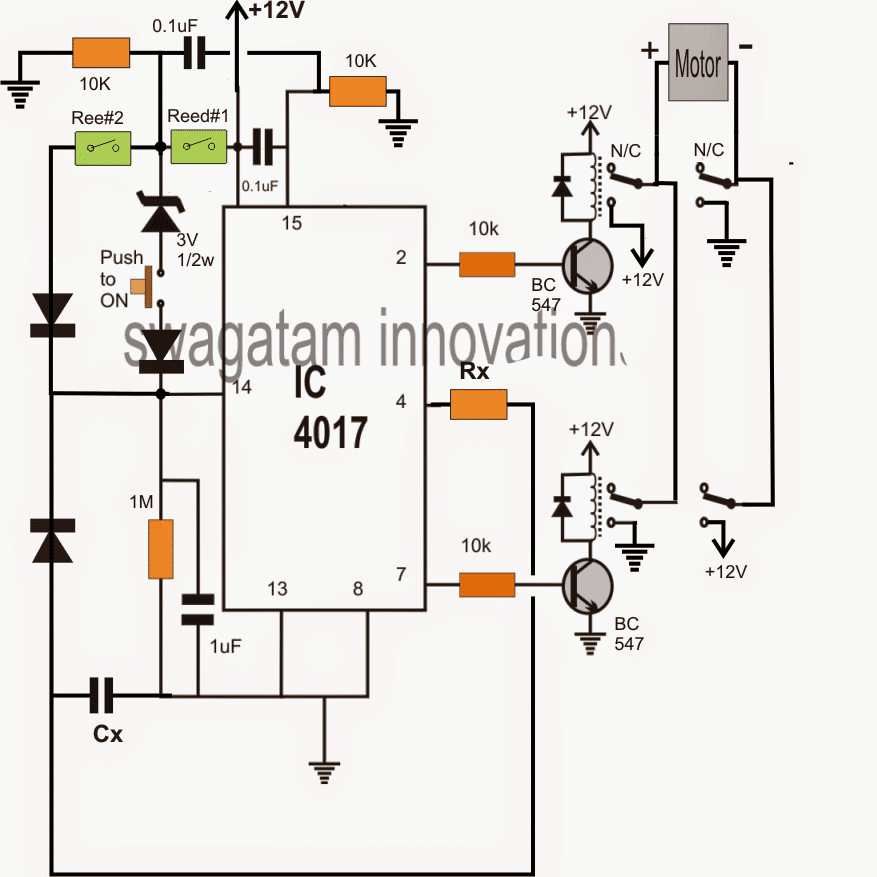In this post I have explained a simple sequential timer designed for implementing a specified set of actions involving a 3 step relay activation which in turn is used for executing the desired mechanisms. The idea was requested by Mr. Ali.
Technical Specifications
I look at your site occasionally and this time round I am looking for a 3 stage timer. I have on your site and several others only found 2 stage timers.
I sincerely hope that I am not putting you into any inconvenience by asking you if you could put a schematic together and mail it to me. If there are any costs involved please let me know up front. The requirements are as follows.
Stage 1 is a camshaft which,at the press of a switch, is driven by a windscreen wiper motor from point A to point B in a matter of milliseconds.
At point B stage 1 should swich off and activate stage 2.After approximately 100 to 200 (max) milliseconds stage 2 should switch off and re activate stage 1 and drive it back back to rest.The time factor for stage 1 and 3 should not exceed 3 seconds(again calculated in milliseconds).
(Stage 2 activates a set of heaters through a relay to bond material.) I could play around with the caps and pots if need be to calibrate it to my requirements.
I just have a basic knowledge in this subject ,hence I would appreciate as much detail that you could provide .
Thanking You and looking forward to your response.
Ali.


The Design
The idea of the proposed camshaft 3-stage timer actuator circuit can be understood with the following points:
Although the idea sounds straightforward, implementing it practically appears to be complex.
Referring to the figure above, when the circuit is powered, the 0.1uF capacitor across pin15 and the positive of the IC resets the IC to a standby position.
When the shown push button is pushed, pin14 of the IC 4017 receives a clock signal which prompts it to shift a logic high to its pin2, pin2 transistor driver actuates the relay and the connected motor is activated to reach a given destination.
When it reaches the destination, reed#2 which is positioned to anticipate this, activates causing a pulse clock to reach pin14 of the IC, which in turn forces it to shift a logic high from pin2 to pin4. This action instantly stops the motor on the spot.
Simultaneously, the "high" from pin4 yet again causes a pulse to hit pin14 of the IC, however due to the presence of Rx and Cx, it's delayed by around 100 to 200ms. After this period of time, pin14 is toggled which allows the IC to forward the logic high from pin4 to pin7.
Pin7 instantly actuates the connected relay which reverses the motor polarity and reverts it to its original position. At the original position reed#1 is positioned to anticipate this, it actuates and resets the IC through the associated 0.1uF capacitor to the original standby position, for the initialization of the next cycle via the push button.
For integrating the heater stage, the junction of Rx, Cx can be configured with an identical relay driver stage and the contacts integrated with the heater.

Have Questions? Please Leave a Comment. I have answered over 50,000. Kindly ensure the comments are related to the above topic.